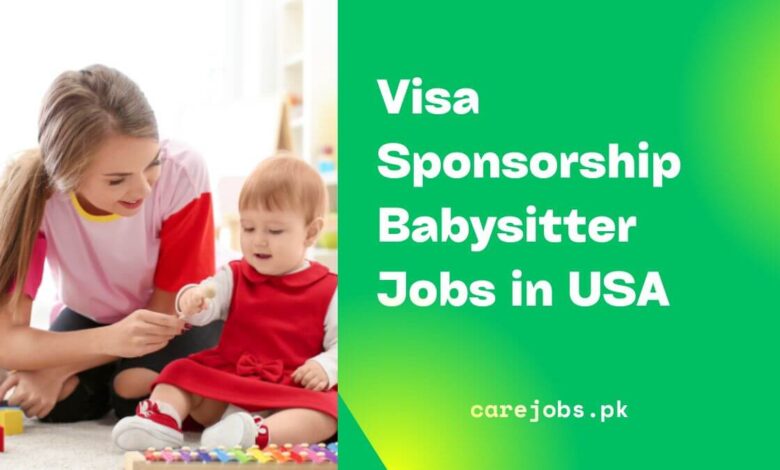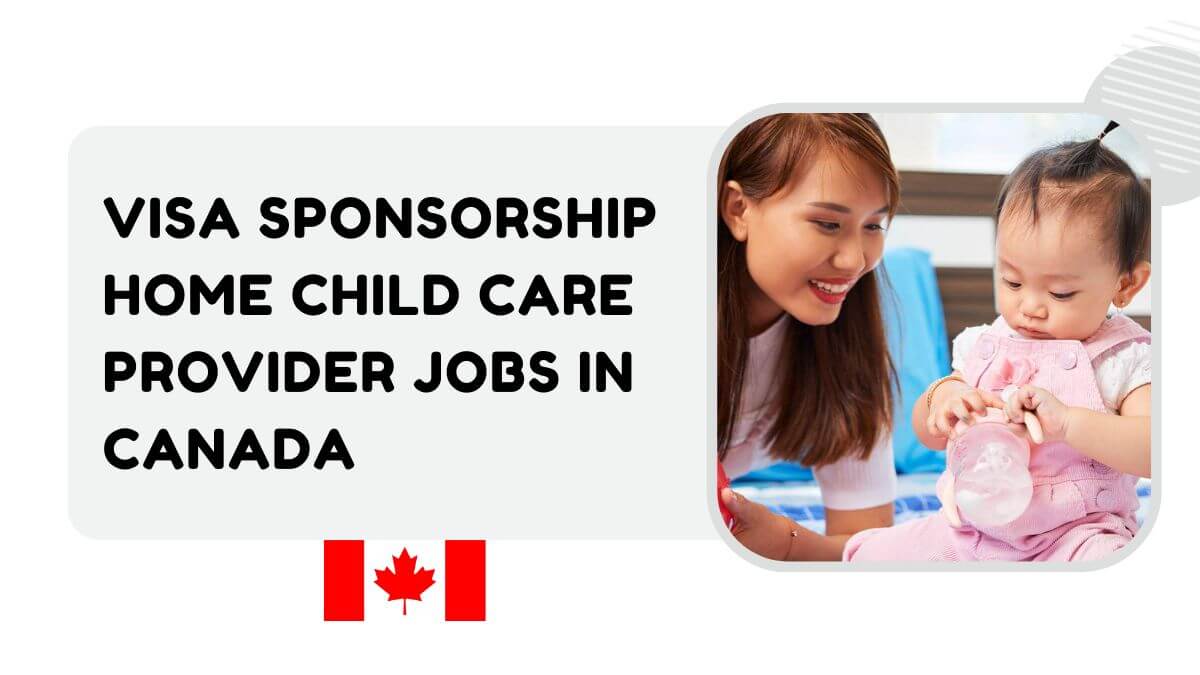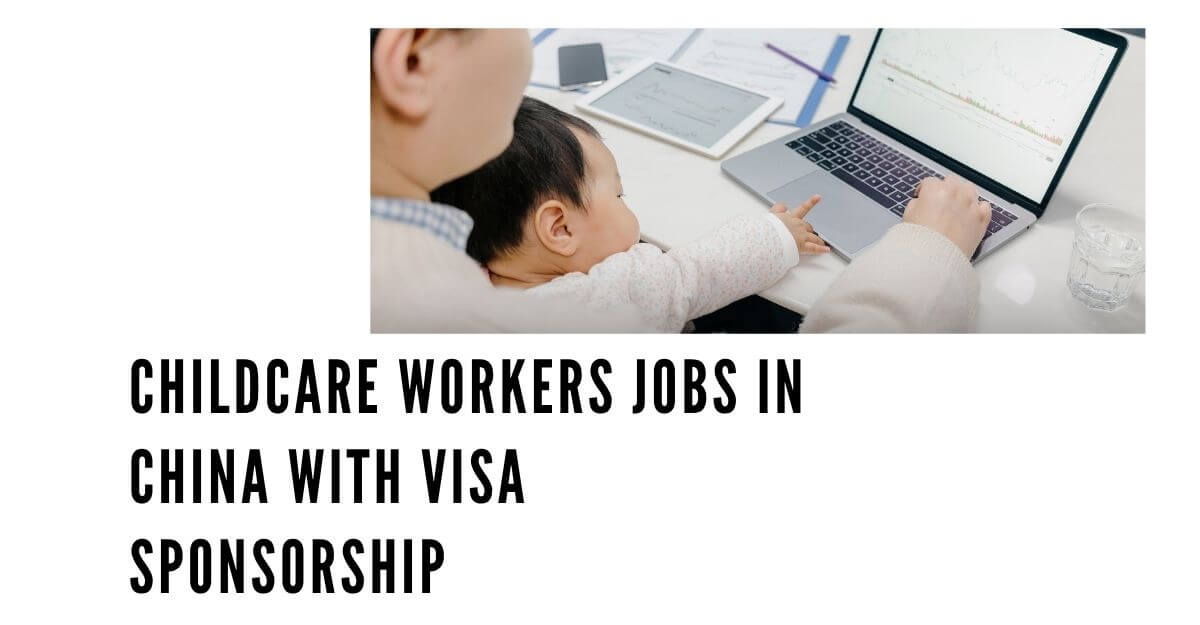Visa Sponsorship Babysitter Jobs in USA 2025 – Apply Now

Due to a current labor shortage in the caregiving sector, securing babysitting jobs in the United States has become relatively more accessible. This article provides a comprehensive overview of employment opportunities for babysitters in the U.S., especially for international candidates seeking visa sponsorship.
We have also included useful links to job portals and caregiver organizations actively hiring foreign applicants. Before submitting any application, please read this entire article carefully.
Check Also: Lab Assistant Jobs in USA with EB-3 Visa Sponsorship
Work Visa Requirements:
To work legally as a babysitter in the U.S., international applicants typically require a work visa. The most commonly used visas in this sector include:
- H-2B Visa: Designed for temporary non-agricultural workers. Eligible employers must demonstrate a shortage of available U.S. workers.
- H-1B Visa: Generally for specialized professionals; less common for babysitters unless paired with additional qualifications like early childhood education.
Babysitting roles are most often supported under the H-2B visa, provided the employer completes the required certification and petition process.
Key Information:
- Country: United States
- Location: Washington, DC (and across the U.S.)
- Eligible Applicants: International Candidates
- Visa Sponsorship: Yes
- Relocation Assistance: May be provided
- Compensation: $7 – $25 per hour
- Job Package: Varies by employer
Benefits:
Babysitting jobs in the U.S. offer a range of personal and professional benefits, including:
- Flexible Work Schedule:
Ideal for students or part-time workers who require adaptable hours. - Building Close Relationships:
Babysitters often develop meaningful connections with the families they work for. - Hands-On Childcare Experience:
Beneficial for those pursuing careers in education, healthcare, or childcare. - Supplemental Income:
A great way to earn additional income while pursuing other interests or studies. - Skill Enhancement:
Babysitters gain experience in communication, conflict resolution, and child development. - Community Reputation:
Reliable babysitters often get new opportunities through referrals and word-of-mouth. - Creative Engagement:
Opportunities to explore storytelling, games, crafts, and fun educational activities. - Positive Role Modeling:
Babysitters play a crucial role in guiding and mentoring children. - Improved Communication:
Regular interaction with both children and parents enhances interpersonal skills. - Sense of Responsibility:
Taking care of children requires high levels of maturity, reliability, and attentiveness.
Responsibilities:
Babysitters are responsible for the safety and general care of children. Typical responsibilities include:
- Supervising children during play, meals, and nap times
- Planning and facilitating age-appropriate activities
- Preparing meals and snacks, taking dietary restrictions into account
- Changing diapers and assisting with potty training as needed
- Administering medication according to parents’ instructions
- Maintaining open and clear communication with parents
- Performing light housekeeping duties related to child care (cleaning toys, tidying up play areas)
Required Qualifications:
Employers generally look for babysitters who meet the following criteria:
- Previous Childcare Experience: Experience in babysitting, daycare, or other child-focused roles
- CPR & First Aid Certification: Must be certified to handle emergencies
- Background Check: Required to ensure safety and trustworthiness
- Strong Communication Skills: Essential for engaging with children and keeping parents informed
- Flexible Availability: Willingness to work evenings, weekends, or holidays
- References: Professional or personal references are often required
- Patience & Creativity: Important for managing behavior and planning interactive activities
- Punctuality & Reliability: Must consistently show up as scheduled
Physical Requirements:
Babysitting often includes moderate physical activity, such as:
- Lifting/Carrying: Picking up infants or toddlers, placing them in cribs or high chairs
- Standing/Walking: Supervising children during playtime or outings
- Stooping/Bending: Picking up toys, cleaning spills
- Physical Engagement: Running, playing, or engaging in outdoor activities
- Carrying Supplies: Diaper bags, toys, snacks, etc.
Salary & Minimum Wage Information:
Babysitter pay rates vary depending on location, experience, and job responsibilities. While the federal minimum wage is $7.25/hour, many states and cities have higher minimums.
Example Wages:
- California:
- $13/hour (25 or fewer employees)
- $14/hour (26+ employees)
- New York: Up to $15/hour
- National Average for Babysitters: Approximately $15.21/hour
- Typical Range: $10 – $30/hour depending on region and qualifications
How to Apply for Visa Sponsorship Babysitter Jobs in USA 2025?
Step 1: Search for Opportunities
Use trusted websites to find babysitting roles, such as:
Step 2: Prepare Your Documents
- Resume with childcare experience
- Valid CPR/First Aid certifications
- Professional references
- Personal statement or cover letter (optional)
Step 3: Apply
Submit your application directly to employers or agencies offering visa sponsorship. Be sure to follow all instructions carefully.
Step 4: Interview & Background Check
Be prepared for interviews (often via video call) and to provide consent for a background check.
Step 5: Visa Processing
If selected, your employer will sponsor and initiate the H-2B visa or relevant visa application.
Frequently Asked Questions:
-
How much do babysitters earn in the U.S.?
Babysitters earn between $10 and $30 per hour, with a national average of $15.21/hour.
-
How can I become a babysitter in the U.S.?
Meet the minimum age (16–18), gain childcare experience, obtain CPR/First Aid certification, and apply through reputable platforms.
-
What does a babysitter do?
Babysitters care for children, prepare meals, assist with basic needs, and ensure safety and engagement.



